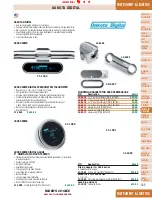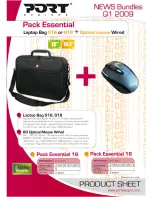
63
3
———————————————————————————————————————————————————————————————————————————————————————————————————————————————————————
d
Sew with the side of the presser foot aligned
with the edge of the fabric.
■
For a seam allowance on the right side
Align the right side of the presser foot with the
edge of the fabric, and sew using stitch
.
a
6.5 mm (1/4 inch)
■
For a seam allowance on the left side
Align the left side of the presser foot with the
edge of the fabric, and sew using stitch
.
a
6.5 mm (1/4 inch)
Memo
●
To change the width of the seam allowance
(the needle position), adjust the stitch width.
For details, refer to “Changing the needle
position” (page 47).
Quilting
Sandwiching batting between the top and bottom
layers of fabric is called “quilting”. Quilts can easily
be sewn using the optional walking foot and the
optional quilting guide.
Note
●
Only use the walking foot with straight or
zigzag stitches. Do not use other patterns.
Reverse stitches cannot be sewn with the
walking foot.
a
Baste the fabric to be quilted.
b
Remove the presser foot and the presser foot
holder.
• For details, refer to “Removing the presser
foot holder” (page 35).
c
Hook the connecting fork of the walking foot
onto the needle clamp screw, lower the
presser foot lever, and then use the presser
foot holder screw to attach the walking foot
to the presser bar.
a
Connecting fork
b
Needle clamp screw
c
Presser foot holder screw
d
Select
stitch ,
or .
e
Place one hand on each side of the presser
foot, and then evenly guide the fabric while
sewing.
Note
●
When sewing with the walking foot, sew at
a speed between slow and medium.
1
1
●
Use the disc-shaped screwdriver to tighten
the screw securely. If the screw is loose, the
needle may strike the presser foot and cause
injury.
●
Be sure to turn the handwheel toward the
front of the machine to check that the needle
does not strike the presser foot. If the needle
strikes the presser foot, injury may result.
CAUTION
Summary of Contents for CE-8080PRW
Page 2: ......
Page 102: ......
Page 103: ......
Page 104: ...English 885 V60 V61 V62 V63 V64 V65 XF0213 001 Printed in China ...
















































